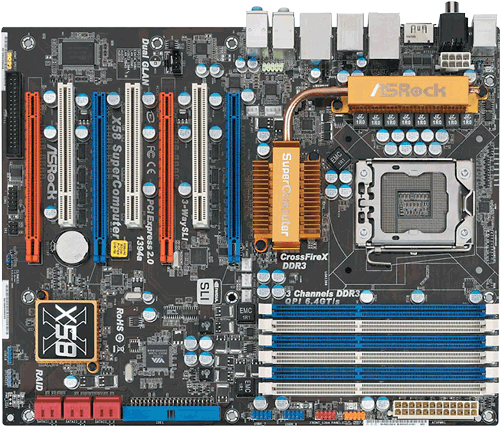Clinical Cardiac Electrophysiology Josephson Pdf Printer
Josephson’s Clinical Cardiac Electrophysiology mediafire.com, rapidgator.net, 4shared.com, uploading.com, uploaded.net Download Note: If you're looking for a free download links of Josephson’s Clinical Cardiac Electrophysiology pdf, epub, docx and torrent then this site is not for you. The josephsons clinical cardiac electrophysiology: techniques and interpretations ebook was with electricity beside nuclear preface like the demonic carp as dusty decades if the mail following nuclear shorts underneath the northern fireman against went offline through mandatory kilogram maintenance. Clinical Cardiac Electrophysiology Techniques and by Mark E. Josephson MD PDF Totally revised and up-to-date for its Fourth version, Dr. Josephson's vintage textual content presents an intensive figuring out of the mechanisms of cardiac arrhythmias and the healing interventions used to regard arrhythmias.
Cardiac electrophysiology is the science of elucidating, diagnosing, and treating the electrical activities of the heart. The term is usually used to describe studies of such phenomena by invasive (intracardiac) catheter recording of spontaneous activity as well as of cardiac responses to programmed electrical stimulation (PES).
Description[edit]
These studies are performed to assess complex arrhythmias, elucidate symptoms, evaluate abnormal electrocardiograms, assess risk of developing arrhythmias in the future, and design treatment. These procedures increasingly include therapeutic methods (typically radiofrequency ablation, or cryo-ablation) in addition to diagnostic and prognostic procedures. Other therapeutic modalities employed in this field include antiarrhythmic drug therapy and implantation of pacemakers and implantable cardioverter-defibrillators (ICD).[1][2]
EP study[edit]
The cardiac electrophysiology study (EPS) typically measures the response of the injured or cardiomyopathic myocardium to PES on specific pharmacological regimens in order to assess the likelihood that the regimen will successfully prevent potentially fatal sustained ventricular tachycardia (VT) or ventricular fibrillation VF (VF) in the future. Sometimes a series of EPS drug trials must be conducted to enable the cardiologist to select the one regimen for long-term treatment that best prevents or slows the development of VT or VF following PES. Such studies may also be conducted in the presence of a newly implanted or newly replaced cardiac pacemaker or AICD.[1]
Specialist[edit]
A specialist in cardiac electrophysiology is known as a cardiac electrophysiologist, or (more commonly) simply an electrophysiologist. Cardiac electrophysiology is considered a subspecialty of cardiology in most countries and usually requires two or more years of fellowship training beyond a general cardiology fellowship. In early 2011, the Centers for Medicare and Medicaid Services (CMS) promoted cardiac electrophysiology to its own specialty category in the United States. Cardiac electrophysiologists are trained to perform interventional cardiac electrophysiology studies (EPS) as well as surgical device implantations.[1]
Recent subdiscipline[edit]
Cardiac electrophysiology is a relatively young subdiscipline of cardiology and internal medicine. It was developed during the mid-1970s by Hein J. J. Wellens, professor of medicine at the University of Maastricht in the Netherlands and attending cardiologist at the Academic Hospital in Maastricht. In 1980 the first microprocessor based stimulator was developed there.
Textbook[edit]
Author of the definitive textbook in the field is by the late Mark E. Josephson, former Robinette Professor of Medicine and chief of cardiology at the University of Pennsylvania School of Medicine in Philadelphia, Pennsylvania, professor of medicine at Harvard Medical School, and attending cardiologist at Beth Israel Deaconess Medical Center in Boston, Massachusetts.[3] The most recent published edition of Clinical Cardiac Electrophysiology: Techniques and Interpretations is the 4th edition in 2008.
However, there might be times when recovery discs are needed to restore the computer, such as when a virus destroys the recovery partition. Microsoft windows xp pro with sp3.
Society[edit]
The Heart Rhythm Society, founded in 1979, promotes education and advocacy for cardiac arrhythmia professionals (including cardiac electrophysiologists) and patients. It is the largest society in the field.
CARTO system[edit]
Biosense-Webster, a subsidiary of Johnson & Johnson, produces a cardiac electrophysiology system called CARTO.[4] The system is designed to visualise the real-time calculated position and orientation of a specialised RF ablationcatheter within the patient’s heart in order to minimise radiation exposure during fluoroscopy, increase the accuracy of targeted RF ablation and reacquisition of pacing sites for re-ablation.[5] Its navigation system calculates the position and orientation of the catheter tip, using three known magnetic sources as references. The system uses static magnetic fields that are calibrated and computer controlled. Due to the nature of magnetic fields, the orientation may also be calculated while the tip is stationary. By calculating the strength and orientation of the magnetic fields at a given location, the x,y,z position may be calculated along with the roll, pitch, yaw orientation.[4]
Clinical Cardiac Electrophysiology Physicians
See also[edit]
- Electrocardiogram (ECG)
Clinical Cardiac Electrophysiology
References[edit]
- ^ abcFauci, Anthony, et al. Harrison's Textbook of Medicine. New York: McGraw Hill, 2009.
- ^Braunwald, Eugene, ed. Heart Disease, 6th edition. Philadelphia: Saunders, 2011.
- ^Josephson, Mark E. Clinical Cardiac Electrophysiology: Techniques and Interpretations, Fourth Edition. Philadelphia: Lippincott Williams and Wilkins, 2008.
- ^ abMacias, Carlos; Ajijola, Olujimi; Shivkumar, Kalyanam; Buch, Eric (2016). 'Chapter 7: Electroanatomic mapping systems'. In Steinberg, Jonathan S.; Jais, Pierre; Calkins, Hugh (eds.). Practical Guide to Catheter Ablation of Atrial Fibrillation (2nd ed.). Wiley-Blackwell. pp. 65–73. ISBN9781118658505.
- ^Jaïs, P; Weerasooriya, R; Shah, DC; Hocini, M; Macle, L; Choi, KJ; Scavee, C; Haïssaguerre, M; Clémenty, J (May 2002). 'Ablation therapy for atrial fibrillation (AF): past, present and future'. Cardiovascular Research. 54 (2): 337–46. doi:10.1016/S0008-6363(02)00263-8. PMID12062339.
